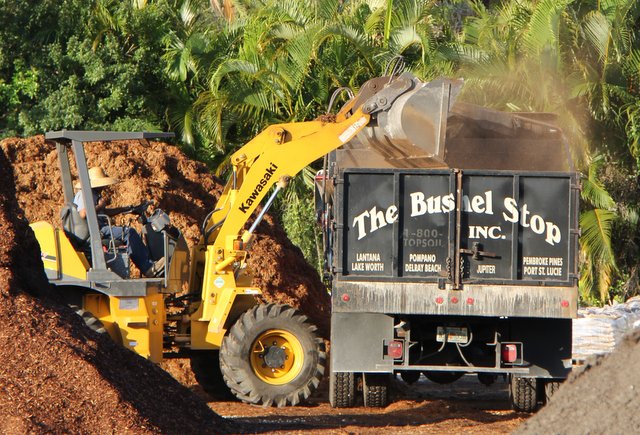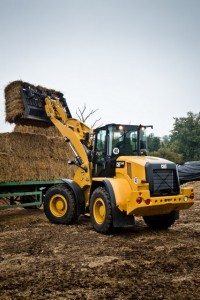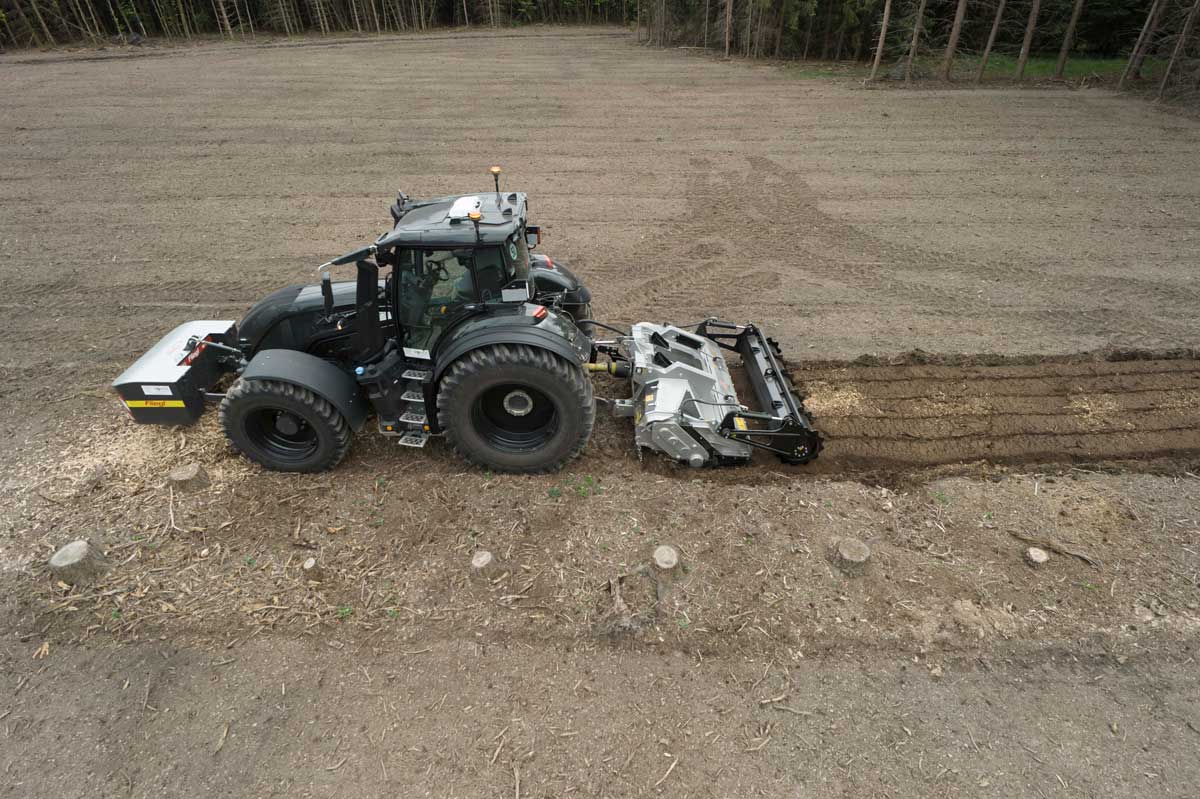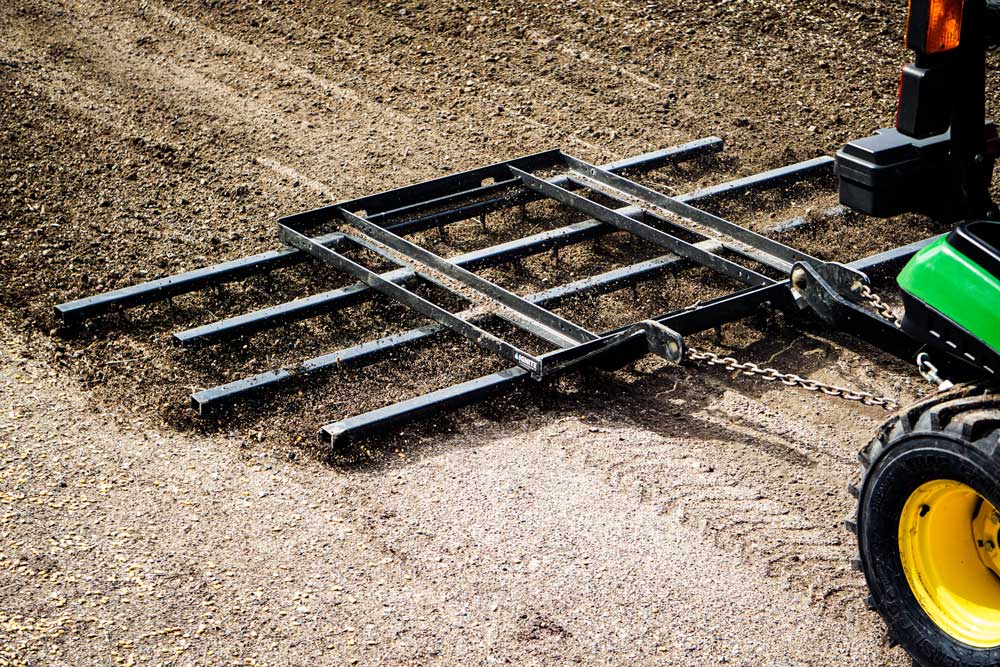Compact Wheel Loaders Offer Plenty of Pluses
Compact wheel loaders are not new. In fact, Kubota sold its first small wheel loader in North America in 1986 (the esteemed R400), but you just don’t see a ton of them on American jobsites today. They’re hugely popular overseas. Apparently Germans love them. The majority of the global sales for compact wheel loaders are sold in Germany (some 70 percent of the market), and German manufacturers like Wacker Neuson have been making small wheel loaders for 80 years.
Regardless of their long history and popularity in places like Europe and Japan, small utility loaders have never gained much traction in North America mostly because of that American, attachment-taking loader called the skid steer. We here in America prefer skid steers, and since we’re American, we’re always right, right? Well, some famous brands and their expert product managers might disagree.
“It’s important to take into consideration that while the price may be higher than a typical skid steer loader, the lower fuel consumption, lower operating costs, versatility of auxiliary hydraulics to operate multiple attachments, improved visibility and ease of operation will ultimately provide long-term benefits that far outweigh the higher price tag,” explains Keith Rohrbacker, construction product manager for Kubota Tractor Corp.
Rohrbacker’s right. In the same way it took almost 20 years for the mini excavator market to develop in the United States, once Americans realized their benefits and niches, the market exploded to 20,000 strong. The same could happen to compact wheel loaders. Increasing fuel prices, cost of ownership, light footprint and the need for a competitive edge could drive more pros to these small loaders. A slew of big brands are waiting — Caterpillar, Kubota, Takeuchi, Wacker Neuson, John Deere, Gehl, Case and Mustang for starters. There are even new players entering the market, so manufacturers definitely see the potential.
“Kawasaki Construction Machinery America [KCMA] has only been in the compact wheel loader market for two years, so we can’t speak to its long-term history, but having just introduced the 42ZV-2 and 45ZV-2, we’re tracking market share and aggressively pursuing this segment,” says Sam Shelton, marketing administrator with KCMA.
Even though sales numbers haven’t changed much over the last 10 years, manufacturers are primed and excited to start populating fleets with small wheel loaders. Interested parties and popular niches include landscape contractors, landscape supply companies, scrap recycling operations, snow removal crews, ag material handlers, rental applications and beyond.
“There has been a steady increase in total industry volume. Last year came right in under 2,700 units,” explains Warren Anderson, brand marketing manager for Case Construction Equipment. “With that said, the entire construction market is enjoying a modest boost, and we expect compact wheel loader sales to increase accordingly — approximately a 10 to 15 percent increase. Customers are paying closer attention to factors such as fuel efficiency and Tier 4 engine technology, which places a greater emphasis on selecting the right machine for the application.”
Safety, Capacity and Cost of Ownership
That headline is the sales pitch for small wheel loaders. What are their advantages? For starters, on compact wheel loaders operators sit up higher, giving better visibility to the attachment and job at hand. That means more safety. It’s also much safer to enter and exit the machine than a skid steer (unless maybe it’s a JCB or Volvo one-armed skid steer), where you must climb over an often dirty and dangerous hydraulic attachment to sit in a moderately comfortable operator’s compartment. Also, compact wheel loaders articulate or use all-wheel drive which is: A) easier on tires; B) easier on turf and other surfaces; and C) better on fuel efficiency. And while compact wheel loaders are typically 20 to 25 percent higher in initial cost than a similar sized skid steer and definitely lacking in similar hydraulic attachment power, they save up to 30 percent on fuel and the tires can last up to five times longer.
On the other hand, their size can be a little intimidating. There seems to be no across-the-board definition of a compact wheel loader. Some are categorized by horsepower (typically anything under 80-100 hp) and bucket size, which is measured in cubic yards (1 to 3 cu yds). Boasting big ranges of operating weights between 4,000 to 20,000 lbs and lifting capacities from 4,000 to 12,000 lbs, compact wheel loaders are obviously big for the compact arena. Some folks feel that needs to change.

Regardless of their long history and popularity in places like Europe and Japan, small utility loaders haven never gained much traction in North American mostly because of that American, attachment-taking loader called the skid steer.
“The key is for compact wheel loaders to actually become more compact — and that’s happening,” says Anderson. “In the past, calling them smaller wheel loaders vs. compact wheel loaders would have been more accurate. I believe manufacturers are realizing that these machines need to be truly compact and represent more than just a scaled-down version of the full-sized models.”
Size and specs are always a good place to start — engine horsepower, operating weight, breakout force, bucket capacity, travel speed, turning radius, width, height and beyond.
To simplify it, start out by focusing on loading (the major application). Selecting the right loader is often based on the amount of material [measured in cubic yards] that needs to be moved per hour, the weight of the material and the area that the loader will operate in. It’s important that you know how the loader will get the material, how quickly the material needs to be moved and where the material needs to go.
“My first piece of advice is to ask the dealer for a demo on the jobsite,” says Douglas Laufenberg, product marketing manager for compact wheel loaders at John Deere Construction and Forestry. “There’s no better way to simulate the tasks the machine will handle. How high do you need the loader to lift? Are you lifting material from the ground or trailer to a high hopper? How heavy is the material? If you’re not sure, ask your dealer. In addition to running the machine through its paces, it’s an opportunity to check visibility and rate comfort.”
Bucket Loads of Options
Besides specs, there will be options out the wazoo. First off, operators have the big choice of choosing an articulated or all-wheel steer machine. An articulated loader excels in indoor applications, narrow spaces and on sensitive terrain (like pristine lawns). An all-wheel steer loader is a little less maneuverable, but is known to have more stability on uneven grounds such as slopes.
Besides drivetrain, there will be plenty of high-tech amenities, optional upgrades and differentiating standard features — joystick and wheel controls, parallel lift and return-to-dig functions, air conditioned and heated cabs, creeper and rimpull controls, tire and attachment choices, roading lights and rotating beacons, LCD displays and security features and so much more. Like buying a car, the options seem endless.
“As always, consider the features and options required for a specific application,” explains Shelton. “Features like the universal coupler allow an owner to utilize the attachments they already own. Are you loading high-sided delivery trucks? Then dumping reach is important. Are you working in wet or slippery conditions? Then look for stability and consider limited slip differentials. Are you working in recycling, scrap or waste? Then look for a rugged, full-frame model that can handle the torque. Looking for production? Then look at cycle times, ground speed and full turn tipping load. Concerned about operator turnover? Look for easy maintenance features such as easy access, HN bushings and easy operator features.”
Know a thing or two about loader arm design too. A parallel lift design is going to provide advantages in working with forks, lifting, loading, unloading and general transportation of materials. It gives you a little bit of a higher lift and better visibility.
“A Z-bar design is a little more compact and provides better digging and breakout forces — just more brute strength,” says Anderson. “And, much like skid steers, understand your lifting capacity. Pinpoint your common daily lifting needs and then add a few hundred pounds to ensure that you’ll have the range and flexibility to perform all of the loading and unloading tasks you may be faced with.”

The key is for compact wheel loaders to actually become more compact. In the past, calling them smaller wheel loaders vs. compact wheel loaders would have been more accurate.
Of course, it’s not just about loading, compact wheel loaders can wield hydraulic attachments (in the 15- to 33-gpm range), with the ability to travel between different tasks at speeds up to 20 mph. Augers, cold planers, grapples, snow blowers — a compact wheel loader has a toolbox full of job possibilities.
“One of the biggest evolutions is the ability to use skid steer attachments,” says Laufenberg. “Higher-flow hydraulics allow contractors to use attachments like snow blowers more effectively and efficiently. Machine speed has increased to quickly transport material, and the introduction of ride control provides operators a shock absorbing system that allows them to travel faster, not bounce on the terrain, and maintain the bucket load.”
How much will all of this cost? Prices for compact wheel loaders range from $30,000 to $70,000 (though most fall in the $50,000 to $60,000 price category). “The Top 3 companies in the North American market would be Caterpillar, Deere and Kubota,” says Rohrbacker. “Depending on the source, Kubota is No. 2 or No. 3 in compact wheel loader retail sales, and the R520S has been selected as the top financed compact wheel loader.”
Even if it costs a little more upfront, forward-thinking contractors are focused on productive and efficient solutions, especially in today’s competitive economy. If crews are looking to expand the value of their small equipment fleet, they might do well to consider a relative old-comer to the American machine family — the small, tool-carrying compact wheel loader. We expect more applications and more enthusiastic owners as buyers better appreciate these growing alternatives in the American iron industry.
Keith Gribbins is managing editor of Compact Equipment, based in Brecksville, Ohio.




